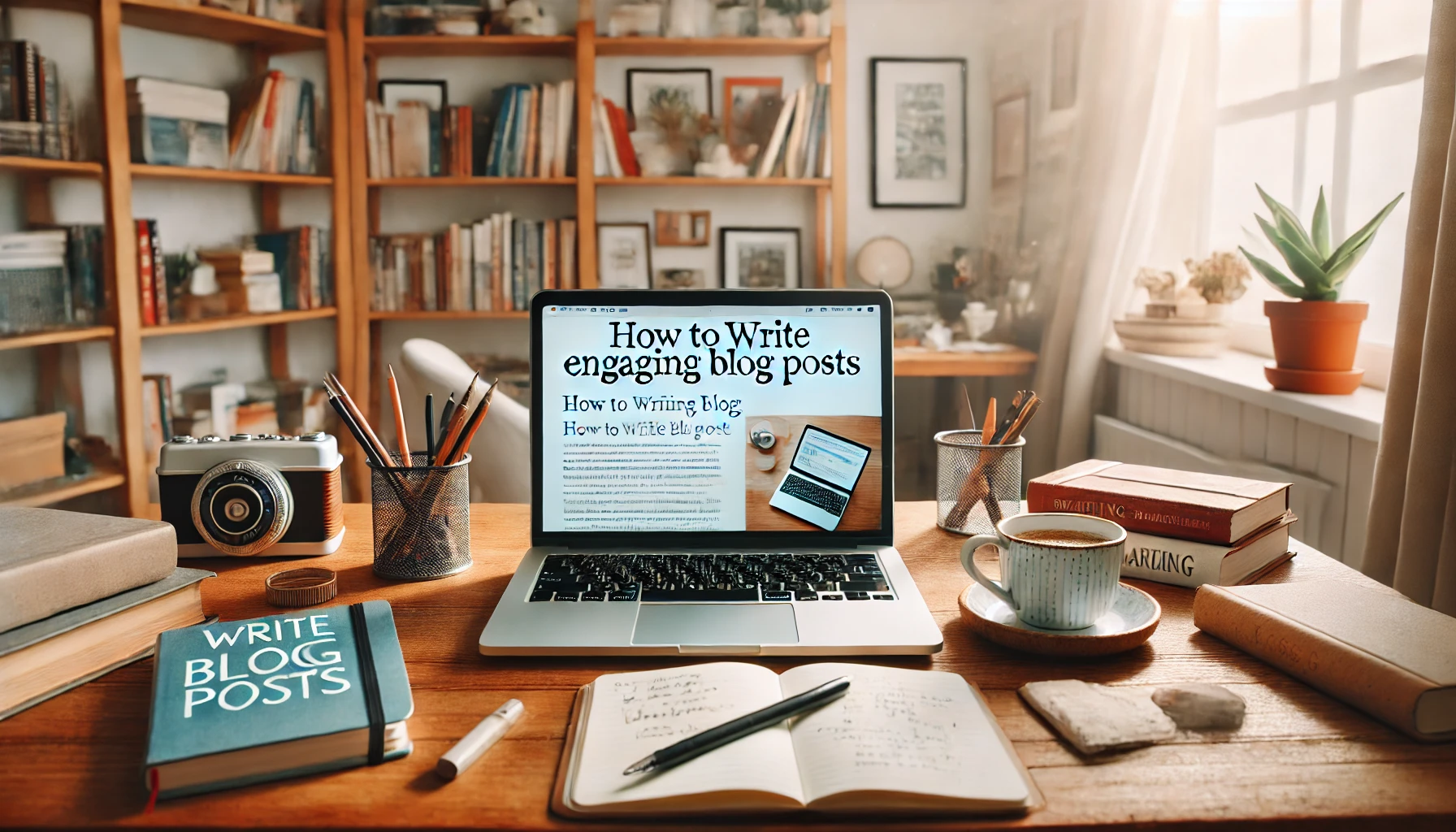Blogging is a powerful tool for content marketing and personal expression, but crafting engaging blog posts that capture readers’ attention can be challenging—especially for beginners. With millions of blogs out there, standing out requires more than just good writing. It’s about connecting with your audience, providing value, and keeping them interested from the first word to the last. Here’s a beginner’s guide on how to write engaging blog posts that will attract and keep readers.
1. Start with a Captivating Headline
Your headline is the first thing readers see, and it plays a huge role in whether or not they’ll click on your blog post. A great headline should be intriguing, informative, and relevant to the topic you’re writing about.
Here’s how to craft attention-grabbing headlines:
- Use numbers: Titles like “5 Tips for…” or “Top 10 Ways to…” tend to perform well because they’re specific and promise actionable content.
- Ask questions: Asking a question in your headline can spark curiosity. For example, “Want to Boost Your Blog Traffic? Here’s How.”
- Include keywords: Including relevant keywords helps with SEO and makes it clear what your post is about.
A strong headline piques interest, making readers want to dive into your content.
2. Write an Engaging Introduction
The introduction of your blog post is crucial. It’s your chance to hook readers and get them interested in reading further. You have a few seconds to make a lasting impression, so make those first few sentences count.
Here are some techniques for writing a captivating intro:
- Ask a question: Starting with a thought-provoking question can encourage readers to continue reading for the answer.
- Share a story: Personal anecdotes or relatable stories can humanize your blog and create an emotional connection with your audience.
- State a shocking fact or statistic: Interesting or surprising facts grab attention and make readers want to learn more.
Remember, the introduction sets the tone for the rest of your post. Make it engaging and inviting.
3. Provide Valuable, Actionable Content
One of the best ways to engage readers is by providing them with value. Your blog post should answer a question, solve a problem, or give readers useful tips. People read blogs because they want to learn something new or get help with something they’re struggling with. If you can provide them with that, they’ll be more likely to keep reading.
Here’s how to ensure your content provides value:
- Be clear and concise: Avoid long-winded explanations. Make your points clear and to the point so that readers can easily absorb the information.
- Use examples: Providing real-life examples or case studies makes your content more relatable and practical.
- Be solution-oriented: If your readers are looking for solutions to a problem, provide them with actionable steps they can follow.
When you focus on delivering value, readers will see your blog as a helpful resource they can return to.
4. Use Subheadings and Bullet Points for Easy Skimming
Most readers skim through blog posts, only reading the parts that stand out to them. To make your blog more readable and engaging, use subheadings and bullet points to break up the text.
Here’s why they matter:
- Subheadings: These help guide the reader through your post and allow them to easily jump to the sections that interest them.
- Bullet points: Presenting key information in bullet points makes it easier for readers to absorb important details quickly.
The easier it is to read your blog, the more likely people will engage with it and share it.
5. Tell a Story and Make It Personal
One of the best ways to keep readers engaged is by telling a story. People connect with stories on an emotional level, so weaving personal anecdotes or case studies into your blog post can make it more interesting and relatable.
Here’s how to tell an engaging story:
- Be authentic: Share your real experiences, struggles, and successes. Readers appreciate honesty and vulnerability.
- Keep it relevant: Make sure the story aligns with the message of your blog post and helps to illustrate your point.
- Use emotions: Engaging stories often evoke emotions, whether it’s humor, inspiration, or empathy.
Storytelling can make your content more memorable and encourage readers to keep coming back for more.
6. Write in a Conversational Tone
Writing in a conversational tone helps make your blog posts feel more personal and engaging. Readers are more likely to connect with your content if it feels like you’re speaking directly to them.
Here’s how to write conversationally:
- Use simple language: Avoid overly complex words or jargon. Write as if you’re explaining something to a friend.
- Ask questions: Engage readers by asking questions throughout your post. This encourages interaction and keeps people interested.
- Use contractions: Writing with contractions like “don’t” instead of “do not” makes your content feel more natural and friendly.
A conversational tone can make your blog posts more enjoyable to read and encourage readers to keep coming back.
7. Include a Clear Call to Action
Once you’ve provided value and engaged your readers, it’s time to direct them toward your next step. A call to action (CTA) is a prompt that encourages your readers to take action after reading your post.
Here are some examples of CTAs you can include in your blog post:
- Subscribe: Encourage readers to subscribe to your newsletter or follow you on social media.
- Download: If you have free resources like eBooks or checklists, invite your readers to download them.
- Comment: Ask your readers to share their thoughts or experiences in the comments section.
A clear CTA guides your readers on what to do next, whether it’s continuing to engage with your content or taking the next step in their journey.
Conclusion: Keep Practicing and Improving
Writing engaging blog posts takes practice, but by following these tips, you can start crafting content that captures your readers’ attention. Remember, the key to keeping people engaged is to provide valuable, actionable content in an easy-to-read format while making your writing personal and relatable.
Don’t be afraid to experiment and find your unique voice as a blogger. With time, you’ll improve your writing and develop a loyal readership who will come back for more.

